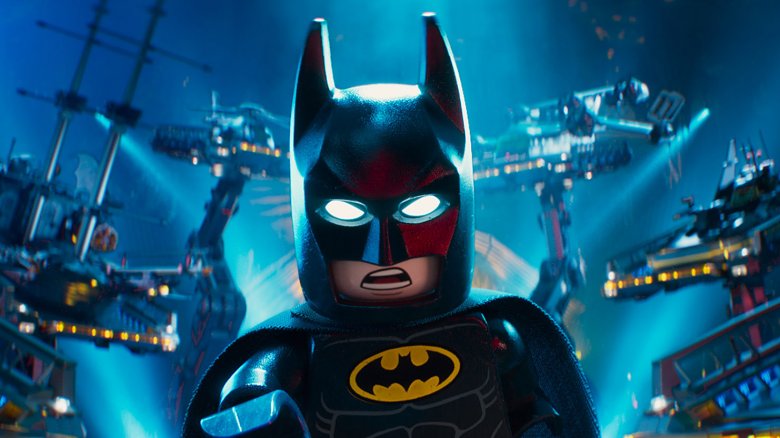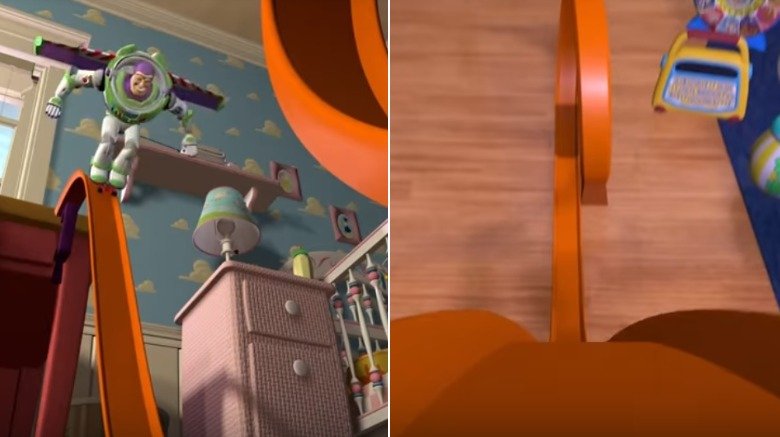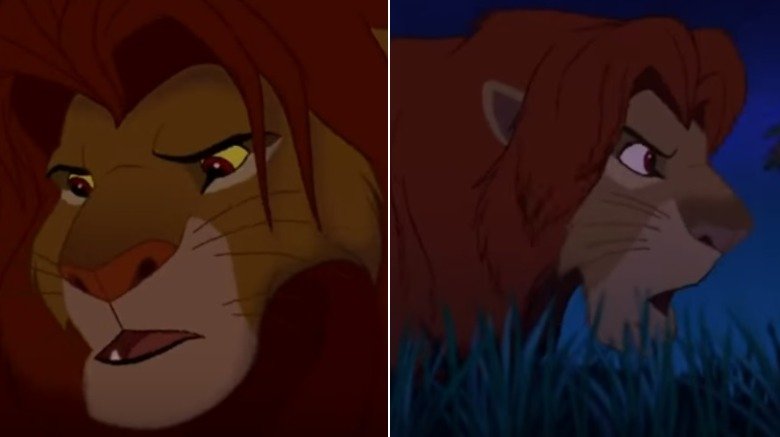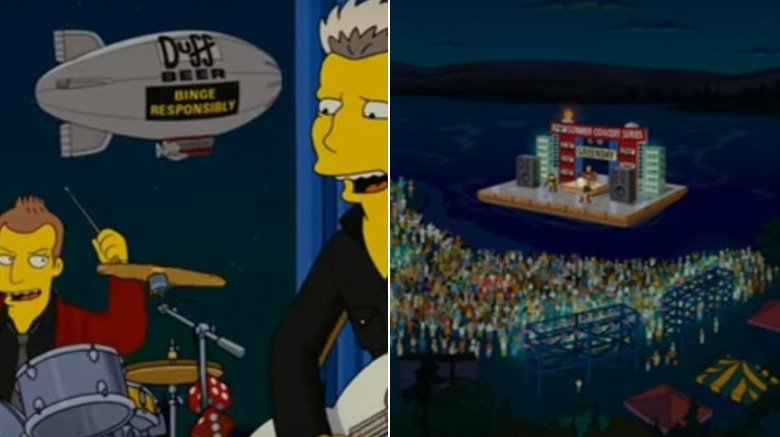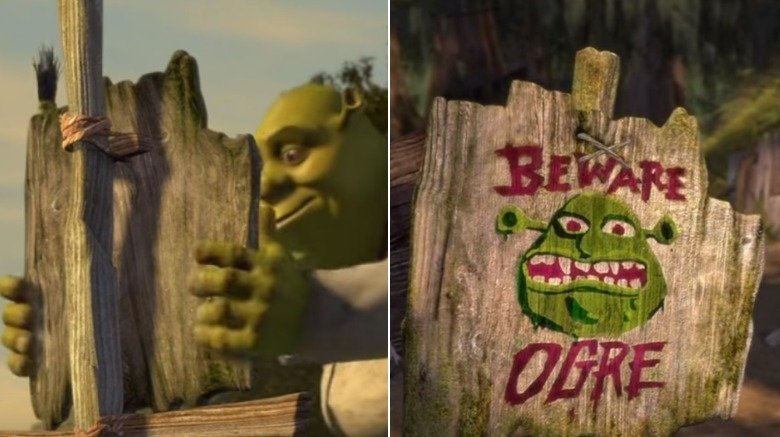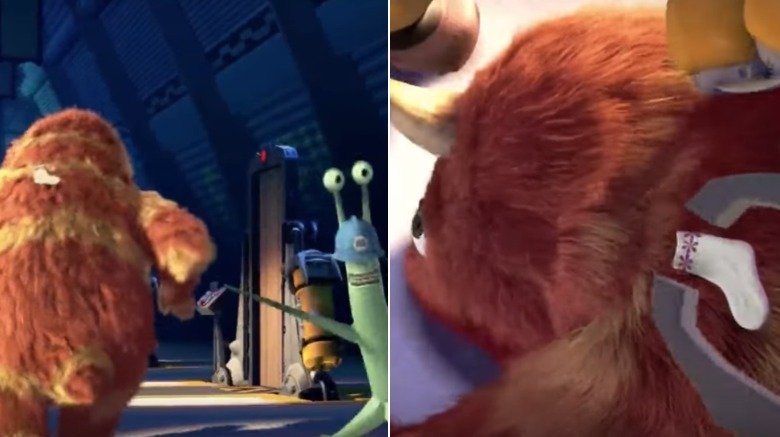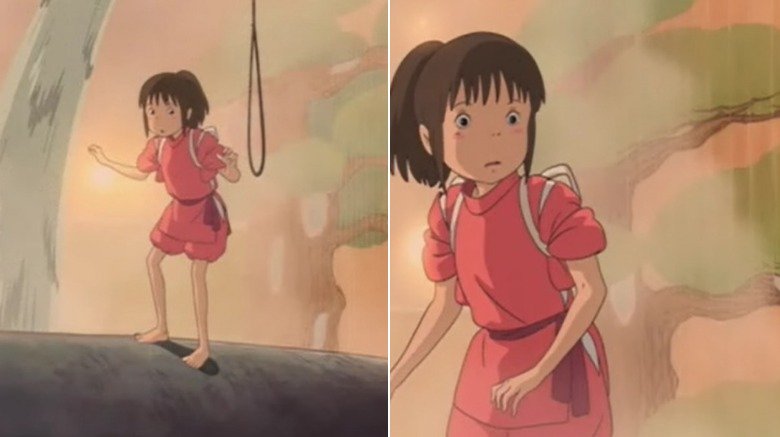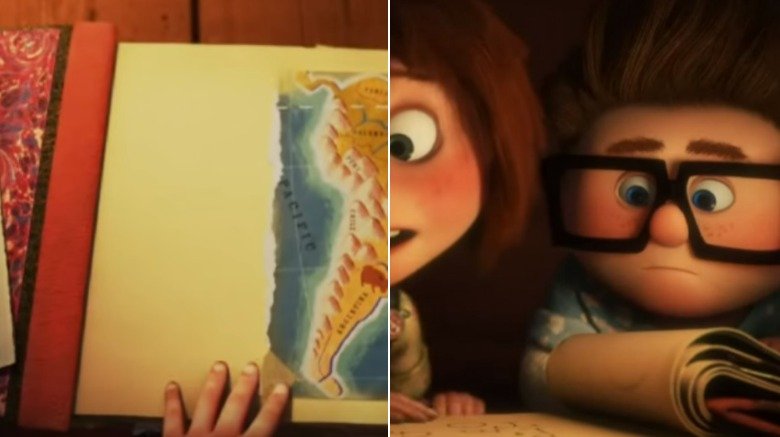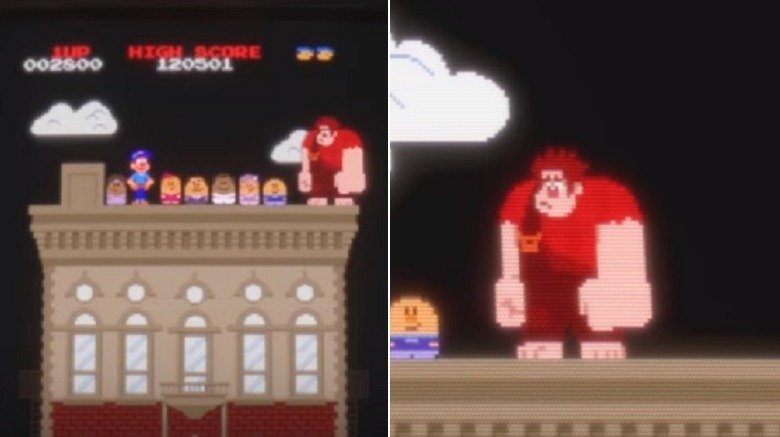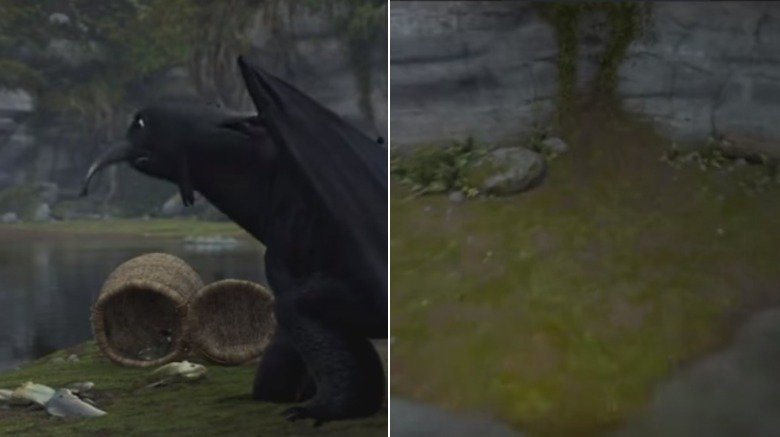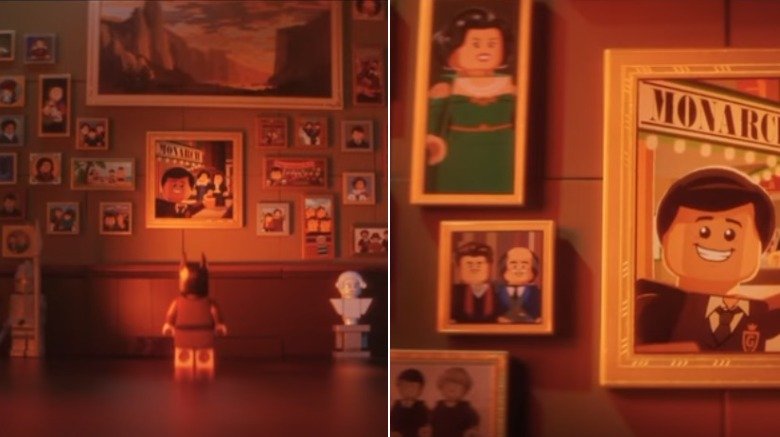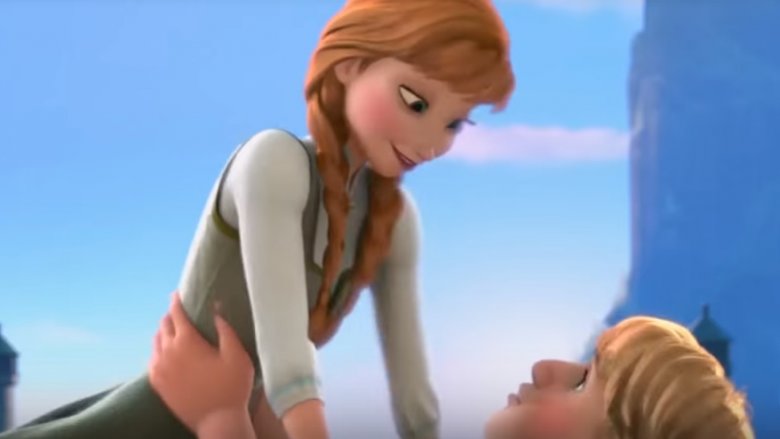Animated Movie Mistakes You Won't Be Able To Unsee
Animation is big business in Hollywood right now. The genre hit a new high in 2016, when a whopping 16 animated features were released, but when the market gets flooded, some movies inevitably fall by the wayside. The best animated features go that extra mile to immerse viewers, helping the audience forget that the characters they're investing in have been drawn in pencil or rendered with pixels (the giraffe in Disney's smash hit Zootopia had nine million individually animated hairs, for example). All of that hard work is so easily undone by a simple mistake, however, and they happen at the top level way more often than you'd think.
Many of the following films are considered all-time greats of animation, but true perfection is a rarity in Hollywood, even when the likes of Disney, Pixar and DreamWorks are involved. That being said, it's hard to be too critical of the talented individuals who worked so hard on these stunning movies, because the top animators have always been under pressure to make their work stand out from the crowd. Mistakes are unavoidable (especially when there's a large number of animators working together on a scene), but when you do actually notice one of these errors, it ends up becoming impossible to unsee.
Toy Story (1995)
"It didn't just make waves, it rewrote the rulebook," Wired said of 1995's Toy Story. "It was as though Pixar (then in collaboration with Disney, now of course owned by Disney) had snuck into the world of animated features and raised the bar so high nobody else could come close to reaching it."
Toy Story outperformed GoldenEye, Batman Forever and Jumanji at the box office to become the highest-grossing film of the year, but this critically acclaimed smash hit isn't completely perfect. The mistakes begin during the opening credits as Andy plays with his toys (he drives RV into his makeshift cardboard bank, but in the next scene he comes out of the closet) and continue as Buzz Lightyear arrives on the scene. As the clueless Space Ranger attempts to take flight, he slides down a Hot Wheels track and does a full loop, though this clearly wouldn't have been possible — the shot from his point of view reveals that his wingspan is way too wide.
The Lion King (1994)
Just one year before Toy Story changed animation forever, Disney released The Lion King theatrically. This truly memorable movie smashed previous records to become the highest grossing hand-drawn film of all time and went on to become the best-selling VHS ever. According to The Daily Beast, the House of Mouse didn't even have its best animators on the job, with the A-team all assigned to Pocahontas instead. The studio expected its historical epic to be the bigger of the two movies, but The Lion King (technically the first Disney animated feature not based on an existing property, though this is up for debate) proved far more popular with critics.
According to one anonymous animator (who describes themselves as an "ex-Disney inbetweener"), the studio had "little faith" in The Lion King and apparently showed early cuts of the film to young animators as "examples of how not to animate" (via Refinery29). The doubters were proven wrong upon release, but did they actually have a point? On top of the factual errors (anteaters are native to South America but a couple somehow make it into the African-set flick) there are some jarring mistakes from the animators in here, ones that really can't be excused. The "whites" of Simba's eye turn yellow in certain scenes, and Nala's eyes switch from blue to green at different points in the movie, too.
The Simpsons Movie (2007)
The Lion King held the record for biggest opening by a non-GCI animated movie for many a year, but it was emphatically dethroned in 2007 when the long-awaited Simpsons film finally hit cineplexes. The Simpsons Movie went on to gross more than half a billion dollars worldwide and was lauded by critics at the time (it still holds a solid 88 percent rating on Rotten Tomatoes), but despite the $75 million budget made available by Fox, some incredibly sloppy mistakes still made it to the big screen.
The movie opens with Green Day playing a gig on Lake Springfield. When frontman Billy Joe Armstrong attempts to broach the topic of the environment, the crowd reacts angrily and begins to shower the band with garbage, pushing the already toxic lake to dangerous levels. The barge that the band are playing on dissolves, killing the punk rockers. It's a hilarious opening, but it isn't without error. During close-ups, a "binge responsibly" Duff Beer blimp can be seen floating just behind the stage, but in wider angles the blimp completely disappears. This isn't the only continuity error present in this scene — many of the characters who throw their drinks at the stage were empty-handed in the previous shot.
Shrek (2001)
DreamWorks' big breakthrough Shrek wasn't afraid to lean heavily into the realm of toilet humor, and that was one of the things that made it such a huge hit for the studio. Shrek subverts the typical Disney tropes right from the get-go — the titular Ogre tears a page out of a fairy tale book and uses it as toilet paper in the very first shot, and the opening credits go on to establish that this isn't your typical hero.
Shrek bathes in mud, brushes his teeth with insect guts, and chows down on eyeballs as he revels in his solitude, happy to be living his life out of reach of the many fairy tale characters and creatures that inhabit this world. To make sure they all get the message, Shrek creates a "Beware Ogre" sign for his swamp, but did you ever notice the mistake here? When he's painting the sign, we can see from behind it that the top left corner is missing, but when he plants it in the ground and we see it from the front, it's the top right corner that's missing. We hate to be picky, but knowing your left from your right is pretty basic stuff, people.
Monsters, Inc. (2001)
The idea that would eventually become Monsters, Inc. was first pitched in 1994, but the process of bringing it to life would take several years. With the help of 3500 computer processors (2100 more than they needed for 1999's Toy Story 2), Pixar animators were able to create realistic-looking fur for the first time, and they also ticked off another first — a T-shirt that actually wrinkled as its wearer moved.
The tiny details that the animators had to contend with (they made sure that every individual strand of Sulley's blue hair cast its own shadow) took up a lot of their time, which is probably why some glaringly obvious mistakes managed to make it into the final cut. During the "2319" scene, hapless scarer George Sanderson emerges from a child's bedroom with a little white sock stuck to his shoulder, triggering a red alert. The Child Detection Agency show up to dispose of the supposedly dangerous item with a controlled explosion, shaving the monster bald for good measure. It's a fun, but ultimately flawed scene, because when Sanderson is pinned down by the CDA, the toxic sock has somehow flipped over.
Spirited Away (1997)
With a glut of homemade animated titles to choose from every year, it's easy for Western audiences to neglect films made outside the States, but in doing so, we deprive ourselves of some truly great movies. America first started to recognize the genius of Japanese animator and director Hayao Miyazaki in 2003 when his anime masterpiece Spirited Away won Best Animated Feature at the Academy Awards — the only hand-drawn, non-English language movie to pick up an Oscar. This coming-of-age fantasy epic follows a ten-year-old girl named Chihiro who has to take on a job at a mysterious bathhouse in order to rescue her parents from the spirit world they've unwittingly entered.
Miyazaki is well-respected in the world of filmmaking, with his work having influenced numerous Hollywood big hitters. Guillermo del Toro once said that My Neighbor Totoro "moved him to tears" when he first saw it as a young adult. Spirited Away has always been Miyazaki's standout picture, however. It was named the second-best movie of the 21st century by The New York Times in 2017, and while we won't be disputing that today, we feel obliged to point out that — as brilliant as this movie undoubtedly is — it isn't flawless. In fact, one of the most iconic scenes (the stink demon sequence) has several mistakes in it, with brooms vanishing from sight and a rope disappearing right over Chihiro's shoulder.
Up (2009)
Disney and Pixar sure do know how to pull at the heartstrings. From Sulley saying goodbye to Boo in Monsters, Inc. to Andy playing with his toys for the last time in Toy Story 3, these great animated movies have a habit of reducing the adults in the audience to tears, never mind the kids. Some of the saddest Pixar movie moments take place in Up, which opens with a four-and-a-half minute montage of Carl and Ellie's long life together — right up until her death. It leaves the viewer raw and ready to get behind Carl as he battles to save the house they fixed up together, which he of course decides to fly to South America so he can live out his late wife's childhood dream.
In a flashback to when the two soulmates are little kids, we see Ellie explaining her passion for exploring to Carl. The gap-toothed girl shows her bespectacled boyfriend her adventure scrapbook, and she has a map of South America on the very first page, a drawing of the legendary Paradise Falls on the second, and she's written "Stuff I'm going to do" on the third. This is where she stops, as all the pages after that are blank and waiting to be filled. In the next shot, however, you can quite clearly see that five pages have been turned over, even though Ellie only turned two.
Wreck-It Ralph (2012)
Some criticized it for being a rehash of the Toy Story movies, but this colorful Disney hit wowed the majority of critics with its deft mixture of familiar Mouse House themes and joyful nostalgia. However, just like the '80s arcade games it features, Wreck-It Ralph comes with the odd glitch, and we're not talking about Vanellope's predicament. The plot centers around Ralph and his struggle to accept himself as a bad guy, which is what he was created to be. In the opening moments of the movie, Ralph explains his job within the game Fix-It Felix, Jr — essentially, he wrecks the game's single building and Felix (controlled by the player) is tasked with fixing it. This makes Felix a hero to the people of Niceland, while Ralph is vilified for being a hulking klutz.
We get a quick run-through of how the game works, with Ralph doing what he does best and wrecking the building only for Felix to come along with his dad's magic hammer and repair the damage in no time at all. He gets awarded with a medal, while Ralph gets tossed off the top of the building by the Nicelanders. If you look closely, there's something wrong with this scene. From a wide angle, we see that Ralph is standing right next to the ledge during the medal giving ceremony, yet in the close-up shot that follows he's now square in the middle, giving the residents of the apartment building enough room for a run-up.
How to Train Your Dragon (2010)
Believe it or not, How to Train Your Dragon actually earned more than Shrek at the worldwide box office, making almost half a billion dollars globally. It was a huge win for DreamWorks after its previous animated feature (2009's Monsters vs. Aliens) barely broke even domestically and received lukewarm reviews. How to Train Your Dragon 2 followed in 2014, and a second sequel, How to Train Your Dragon: The Hidden World, is now due to drop in March 2019 after its initial 2018 release date was missed. Let's hope the animators are using that time to fix all the little mistakes that inevitably happen on a movie of this size, because plenty slipped through the net with the first film.
One of the most memorable scenes in the movie is the one in which reluctant Viking Hiccup meets Toothless, a Night Fury dragon he just can't bring himself to kill. After he helps to bring him down with a net, the beast is there for the taking, but instead of cutting out his heart to take to his father, Hiccup cuts the ropes loose and sets him free. When he returns to the injured dragon with a homemade device that will allow him to fly again, he comes with a basket full of fish as a peace offering, which Toothless makes short work of. When the dragon takes off seconds later and we see Hiccup's view of the ground below, the basket has vanished.
The Lego Batman Movie (2017)
It might have fallen well short of 2014's The Lego Movie in terms of box office returns, but The Lego Batman Movie still raked in a ton of cash globally, with receipts totaling almost $312 million. It was hailed as a "dizzyingly funny and beautifully animated" movie by Rotten Tomatoes critics, who were almost unanimous in their approval — the movie holds an impressive 90 percent rating on the Tomatometer. J. R. Jones of the Chicago Reader was among the 10 percent of critics who didn't enjoy the movie, claiming that many of its problems were simply masked by the breakneck speed at which it hurtles along.
"Unfortunately the filmmakers embrace a perpetual-motion ethic that prevents them from sticking with any idea for long," Jones said of the DC Lego flick. "This is Mad Max: Fury Road for five-year-olds." Some of the mistakes made by the animators get lost in the madness of the movie's many action set pieces, but when The Lego Batman Movie slows down, you do start to notice the cracks a little. During the scene in which Bruce Wayne talks candidly to the portrait of his dead parents, the pictures to either side change around between shots, and when Alfred spooks his master (getting karate-kicked into a piano for his trouble), the chair that was directly behind Batman somehow disappears. Either Wayne Manor is haunted, or somebody messed up on this one.
Frozen (2013)
Disney's Frozen was always likely to do big business. The studio must have known it was on to a winner just based on the incredibly catchy songs, but nobody could have predicted that Frozen would take over the world the way it did. Driven by the popularity of flagship song "Let It Go," the movie became a genuine phenomenon, earning an astonishing $1.2 billion at the worldwide box office. Unless you've been living under a rock since 2013, chances are you've heard this song several hundred times, but did you ever notice the glaring animation error in this scene? As Elsa breaks into song she quite literally lets her hair down, but when she switches her big blonde braid from one shoulder to the other, it actually goes straight through her body instead of around it.
Like her sister, Anna also seems to be capable of passing solid objects through her body. After her "true love" Prince Hans shows his true colors and she realizes that Kristoff has been the one for her all along, Anna surprises him with a brand new sled to replace the one he lost while helping her. In his euphoria, Kristoff picks Anna up by the waist and gives her a romantic little spin, but hit your pause button mid-swirl and you'll see that his thumb actually goes through Anna's waist. It's a blink-and-you-miss-it moment, but now that you know about it you won't be able to unsee it.
